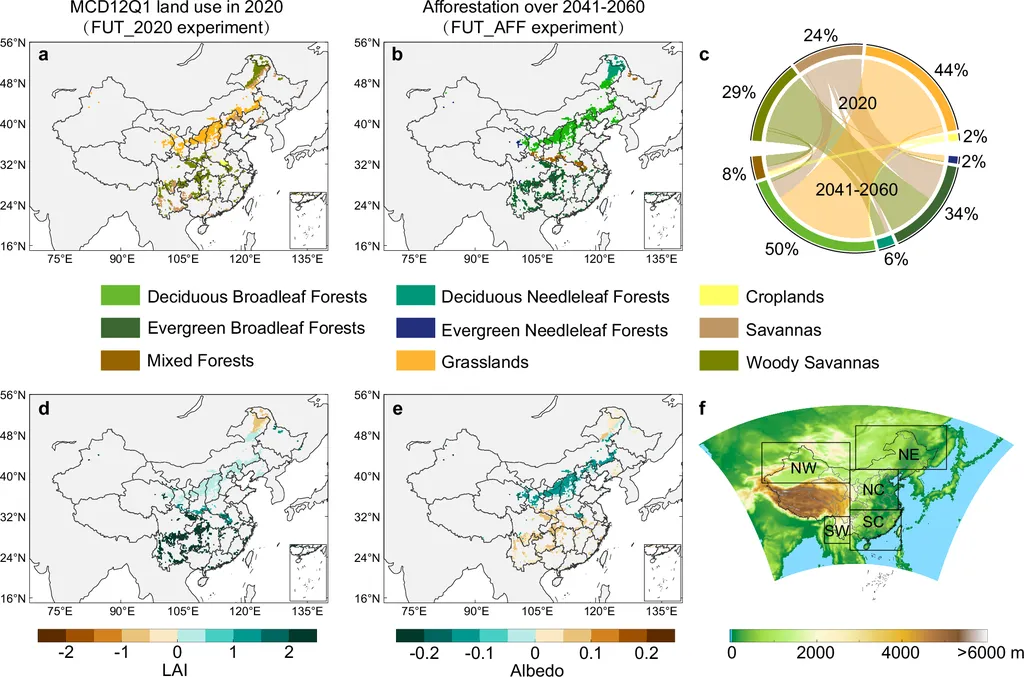In the heart of Southwestern China, a silent revolution is taking place, one that could reshape our understanding of afforestation and its impact on local climates. A recent study published in *Environmental Research Letters* has unveiled a surprising twist in the tale of tree planting, suggesting that the benefits might be even more substantial than previously thought.
The research, led by Panxing He from Fudan University’s School of Life Sciences, delves into the complex interplay between afforestation and land surface temperature (LST). While it’s widely known that forests can cool the land surface by replacing non-forest cover, this study highlights an often-overlooked factor: indirect environmental feedbacks that can amplify these cooling effects.
The team developed a novel analytical framework to dissect the direct and indirect effects of afforestation on LST. They defined a ‘zero-impact line’ to represent the direct cooling effect from forest cover conversion and introduced an indirect effect amplification index (τ) to quantify the indirect effects.
The results were striking. For every 1% increase in forest cover, the direct effects reduced LST by 0.029 °C to 0.036 °C. However, in the early stages of forestation, the indirect effects were even more pronounced. In the provinces of Yunnan, Guizhou, and Guangxi, τ reached 187%, 227%, and 242% respectively. This means that indirect feedbacks can equal or even exceed the direct cooling effects, significantly enhancing the overall cooling outcome.
“This study challenges the conventional wisdom about afforestation’s impact on local climates,” said He. “It’s not just about the direct effects of tree cover; the indirect feedbacks can be a game-changer.”
For the agriculture sector, these findings could be a boon. Cooler temperatures can help mitigate heat stress on crops, potentially increasing yields and improving the resilience of agricultural systems to climate change. Moreover, the enhanced cooling effects could open up new possibilities for climate-smart agriculture, where strategic afforestation could be used to create more favorable microclimates for crop growth.
The study also underscores the importance of considering both direct and indirect effects in land-use planning and climate mitigation strategies. As He notes, “Understanding these complex interactions is crucial for designing effective afforestation programs that maximize cooling benefits and support sustainable development.”
The research could pave the way for future studies exploring the indirect effects of afforestation in different regions and under varying climatic conditions. It also highlights the need for more sophisticated models that can accurately capture these complex feedback mechanisms.
In the words of He, “This is just the beginning. There’s so much more to uncover about how forests interact with their environments, and how we can harness this knowledge to combat climate change and support sustainable agriculture.”
As we grapple with the challenges of a warming world, this study offers a glimmer of hope, demonstrating the power of nature-based solutions and the untapped potential of our forests. It’s a reminder that sometimes, the most effective solutions are the ones that are right in front of us, waiting to be discovered.

